FITC Conjugated Vicia villosa Lectin (Bushy Vetch) -VVA-
Summary
Glycans are the results of the coordinated actions of glycosyltransferases accountable for particular sugar additions. Glycans current on proteins can affect protein stability, transport, operate, and recognition, and thus can have profound results on cell–cell interactions, adhesion, and signaling occasions occurring throughout eukaryotic improvement. Lectin staining gives a great tool to detect the spatial distribution of particular glycans in creating tissues in situ. Right here we describe a technique to detect various glycans current in creating Drosophila tissues and organs utilizing fluorescently labeled lectins.
1 Introduction
Glycosyltransferases are accountable for the formation of particular glycan buildings that may have various organic results. Lectins are sugar-binding proteins which have been used to detect quite a lot of glycan buildings current throughout eukaryotic improvement [1, 2]. In an effort to find out the spatial distribution of glycans throughout Drosophila improvement, we’ve stained Drosophila embryos and tissues with fluorescently labeled lectins and carried out confocal microscopy [3]. This technique is appropriate with whole-mount staining, permitting one to picture glycan expression in a 3D embryo or tissue at particular developmental levels.
2 Supplies
Put together all options utilizing distilled water. Strictly comply with all storage and waste disposal procedures.
-
Bovine serum albumin (BSA): Albumin bovine fraction V (MP Biomedicals LLC., Solon, OH, USA). Retailer at 4 °C.
-
Dechorionation answer: Germicidal bleach, energetic ingredient is 6.15 % sodium hypochlorite (Clorox Skilled Merchandise Firm, Oakland, CA, USA). Retailer at room temperature.
-
Heptane (Sigma-Aldrich, St. Louis, MO, USA). Retailer at room temperature in flame resistant cupboard.
-
Glycerol (Life Applied sciences, Carlsbad, CA, USA). Make 70 % glycerol answer with 1× PBS. Retailer at room temperature.
-
Methanol: Methyl alcohol, anhydrous (Mallinckrodt Baker, Inc., Phillipsburg, NJ, USA.). Retailer at room temperature in flame resistant cupboard.
-
Paraformaldehyde: 10 % inventory answer, EM grade, methanol and RNase free (Electron Microscopy Science, Hatfield, PA, USA). Retailer at room temperature.
-
Phosphate Buffered Saline (PBS), 10× (High quality Organic, Inc., Gaithersburg, MD, USA). Dilute to 1× with distilled water. Retailer at room temperature.
-
Triton X-100 (Sigma-Aldrich). Retailer at room temperature.
-

fitc conjugated vicia villosa Embryo Fixation Inventory Buffer: 800 mM KCl, 200 mM NaCl, 150 mM PIPES (1,4-Piperazinediethanesulfonic acid, Sigma-Aldrich), and 20 mM EGTA (ethylene glycol-bis (2-aminoethylether)-N, N, N′, N′-tetraacetic acid, Sigma-Aldrich) in 400 mL. Alter pH to 7.Four with 5 N NaOH (see Be aware 1) and convey to closing quantity of 500 mL. Autoclave to sterilize. Retailer at 4 °C.
-
Embryo Fixation Working Resolution: Mix 2 components distilled water, 2 components 10 % paraformaldehyde and 1 half Embryo Fixation Inventory Buffer. Make recent earlier than every use.
-
Larval Fixation Resolution: 4 % paraformaldehyde in 1× PBS. Make recent earlier than every use.
-
Lectins: Fluorescent lectins bought from EY Laboratories (San Mateo, CA, USA) included tetramethylrhodamine isothiocyanate (TRITC)-conjugated Canavalia ensiformis (Con A); TRITC-conjugated Dolichos biflorus (DBA); fluorescein isothiocyanate (FITC)-conjugated Artocarpus integrifolia (Jacalin); FITC-conjugated Vicia villosa (VVA); and FITC-conjugated Triticum vulgare (WGA). Lectins bought from Molecular Probes (Eugene, OR, USA) included Alexa Fluor 488-conjugated Arachis hypogaea (PNA) and Alexa Fluor 568-conjugated Glycine max (SBA). FITC-conjugated Helix pomatia (HPA) (Sigma-Aldrich). Lectins had been reconstituted at 1 mg/mL in distilled water and saved as 20 µL aliquots at −20 °C (see Be aware 2). All fluorescent lectins needs to be protected against mild.
-
Sugars (Sigma-Aldrich) for inhibition of lectin binding: N-Acetyl-d-galactosamine (GalNAc), for inhibition of HPA, DBA, SBA and VVA (retailer at 4 °C); N-Acetyl-d-glucosamine (GlcNAc) for inhibition of WGA (retailer at −20 °C); d-(+)-Galactose (Gal) for inhibition of Jacalin and PNA (retailer at room temperature); d-(+)-Mannose (Man) for inhibition of Con A (retailer at room temperature). Make 1 M inventory answer of every sugar in 1× PBS. Retailer inventory options at −20 °C.
-
Hoechst 33342 nuclear counterstain, 10 mg/mL inventory answer (Molecular Probes, Eugene, OR, USA). Retailer at 4 °C.
-
Mounting Resolution: 2 % 1,4-Diazabicyclo[2.2.2]octane (Dabco, Sigma-Aldrich) in 70 % glycerol. Retailer at −20 °C.
-
Glass slides: 75 × 25 mm Superfrost/Plus Microslides (Daigger, Vernon Hills, IL, USA).
-
Cowl slips: 24 × 50mm microscope cowl glass, No. 1 (Thermo Scientific, Portsmouth, NH, USA).
-
Cell strainer, 70 µm nylon mesh (BD Biosciences, San Jose, CA, USA).
-
Pink sable paintbrush, dimension 2 (Thomas Scientific, Swedesboro, NJ, USA).
-
7 mL scintillation vials with unattached cap (Daigger).
-
GyroMini™ Nutating Mixer (Labnet Worldwide, Woodbridge, NJ, USA).
-
Pyrex Spot Check Plates, 9 nicely, 85 × 100 mm (Thomas Scientific).
-
Dissecting Dish with Plastic Dish (Electron Microscopy Science).
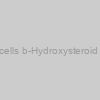 Rabbit anti Pseudomonas testosteroni cells b-Hydroxysteroid dehydrogenase, conjugated with Biotin |
|||
| MBS573511-1mL | MyBiosource | 1mL | EUR 545 |
 Rabbit anti Pseudomonas testosteroni cells b-Hydroxysteroid dehydrogenase, conjugated with Biotin |
|||
| MBS573511-5x1mL | MyBiosource | 5x1mL | EUR 2305 |
ELISA Kit) Human placental steroid metabolizing enzyme 11b-hydroxysteroid dehydrogenase type 2(11βHSD2)ELISA Kit |
|||
| YLA3869HU-48T | Shanghai YL Biotech | 48T | Ask for price |
ELISA Kit) Human placental steroid metabolizing enzyme 11b-hydroxysteroid dehydrogenase type 2(11βHSD2)ELISA Kit |
|||
| YLA3869HU-96T | Shanghai YL Biotech | 96T | Ask for price |
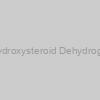 Bacterial Betahydroxysteroid Dehydrogenase Antibody |
|||
| GWB-35BF5A | GenWay Biotech | 1 ml | Ask for price |
) ADH/ALDH | Alcohol/acetaldehyde dehydrogenase (bacterial/algal) |
|||
| AS10-748 | Agrisera AB | 200 µl | EUR 394 |
 Rabbit anti Rhodopseudomonas spheroides b-Hydroxybutyrate dehydrogenase |
|||
| MBS573119-10mg | MyBiosource | 10mg | EUR 325 |
 Rabbit anti Rhodopseudomonas spheroides b-Hydroxybutyrate dehydrogenase |
|||
| MBS573119-5x10mg | MyBiosource | 5x10mg | EUR 1320 |
 Rabbit anti Rhodopseudomonas spheroides b-Hydroxybutyrate dehydrogenase |
|||
| MBS573264-1mg | MyBiosource | 1mg | EUR 715 |
 Rabbit anti Rhodopseudomonas spheroides b-Hydroxybutyrate dehydrogenase |
|||
| MBS573264-5x1mg | MyBiosource | 5x1mg | EUR 3080 |
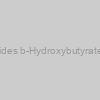 Rabbit anti Rhodopseudomonas spheroides b-Hydroxybutyrate dehydrogenase, conjugated with Biotin |
|||
| MBS573285-1mL | MyBiosource | 1mL | EUR 545 |
 Rabbit anti Rhodopseudomonas spheroides b-Hydroxybutyrate dehydrogenase, conjugated with Biotin |
|||
| MBS573285-5x1mL | MyBiosource | 5x1mL | EUR 2305 |
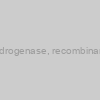 D-Lactate dehydrogenase, recombinant from bacteria |
|||
| MBS682178-100KUnits | MyBiosource | 100KUnits | EUR 660 |
 D-Lactate dehydrogenase, recombinant from bacteria |
|||
| MBS682178-200KUnits | MyBiosource | 200KUnits | EUR 1060 |
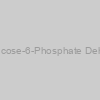 Bacteria-Derived Glucose-6-Phosphate Dehydrogenase Purified |
|||
| IBCTG6PDH10KU | Innovative research | each | EUR 708 |
|
Description: Bacteria-Derived Glucose-6-Phosphate Dehydrogenase Purified |
|||
 Bacteria-Derived Glucose-6-Phosphate Dehydrogenase Purified |
|||
| IBCTG6PDH1KU | Innovative research | each | EUR 106 |
|
Description: Bacteria-Derived Glucose-6-Phosphate Dehydrogenase Purified |
|||
 Bacteria-Derived Glucose-6-Phosphate Dehydrogenase Purified |
|||
| MBS136187-1000Units | MyBiosource | 1000Units | EUR 205 |
 Bacteria-Derived Glucose-6-Phosphate Dehydrogenase Purified |
|||
| MBS136187-10KUnits | MyBiosource | 10KUnits | EUR 910 |
 Bacteria-Derived Glucose-6-Phosphate Dehydrogenase Purified |
|||
| MBS136187-5x10KUnits | MyBiosource | 5x10KUnits | EUR 3905 |
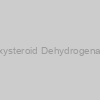 Bacteria-Derived Hydroxysteroid Dehydrogenase Induced Cell Purified |
|||
| IBCTHSD1GM | Innovative research | each | EUR 137 |
|
Description: Bacteria-Derived Hydroxysteroid Dehydrogenase Induced Cell Purified |
|||
 Bacteria-Derived Hydroxysteroid Dehydrogenase Induced Cell Purified |
|||
| IBCTHSD5GM | Innovative research | each | EUR 552 |
|
Description: Bacteria-Derived Hydroxysteroid Dehydrogenase Induced Cell Purified |
|||
 Bacteria-Derived Hydroxysteroid Dehydrogenase Induced Cell Purified |
|||
| MBS136191-1g | MyBiosource | 1g | EUR 250 |
 Bacteria-Derived Hydroxysteroid Dehydrogenase Induced Cell Purified |
|||
| MBS136191-5g | MyBiosource | 5g | EUR 695 |
 Bacteria-Derived Hydroxysteroid Dehydrogenase Induced Cell Purified |
|||
| MBS136191-5x5g | MyBiosource | 5x5g | EUR 2945 |
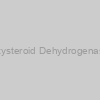 Bacteria-Derived Hydroxysteroid Dehydrogenase Mutant Strain Purified |
|||
| IBCTHSDMT10UN | Innovative research | each | EUR 170 |
|
Description: Bacteria-Derived Hydroxysteroid Dehydrogenase Mutant Strain Purified |
|||
 Bacteria-Derived Hydroxysteroid Dehydrogenase Mutant Strain Purified |
|||
| IBCTHSDMT50UN | Innovative research | each | EUR 607 |
|
Description: Bacteria-Derived Hydroxysteroid Dehydrogenase Mutant Strain Purified |
|||
 Bacteria-Derived Hydroxysteroid Dehydrogenase Mutant Strain Purified |
|||
| MBS136192-10Units | MyBiosource | 10Units | EUR 280 |
 Bacteria-Derived Hydroxysteroid Dehydrogenase Mutant Strain Purified |
|||
| MBS136192-50Units | MyBiosource | 50Units | EUR 755 |
 Bacteria-Derived Hydroxysteroid Dehydrogenase Mutant Strain Purified |
|||
| MBS136192-5x50Units | MyBiosource | 5x50Units | EUR 3220 |


